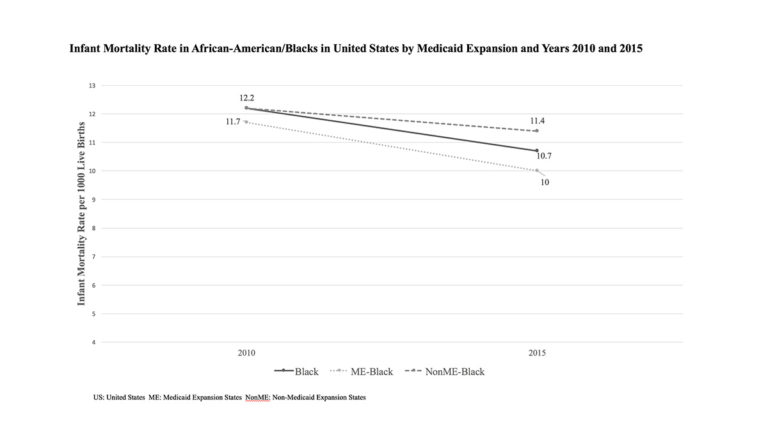Infant Mortality and Medicaid Expansion
Average death rates among all infants decreased in states that expanded Medicaid coverage, and increased in states that did not.

Read Time: 2 minutes
Published:
Medicaid funds many maternal and child health care services in the United States, including 45% of births. Since the Affordable Care Act was implemented in 2014, 34 states have opted to expand their Medicaid programs. But some of the states with the largest proportions—54% to 72%—of births covered by Medicaid did not expand. As of 2016, several of those states, including Alabama and Mississippi, had the highest rates of infant mortality in the country at about 7.4 to 9.1 infant deaths for every 1000 live births.
Bhatt and Beck-Sagué compared infant death rates between states that expanded Medicaid coverage and those that did not. Average death rates among all infants decreased in states that expanded Medicaid, and increased in states that did not.
As shown in the Figure, Black infant mortality decreased overall from 2010 to 2015, but twice as much in Medicaid expansion states (a difference of 1.7 deaths per 1000 live births) compared to non-expansion states (a difference of 0.8 deaths per 1000 live births).
The researchers call for studies to further identify reasons why Medicaid expansion states had better infant outcomes, and what barriers to child health may exist in non-expansion states.
Databyte via Chintan B. Bhatt and Consuelo M. Beck-Sagué, Medicaid Expansion and Infant Mortality in the United States. American Journal of Public Health (AJPH).



